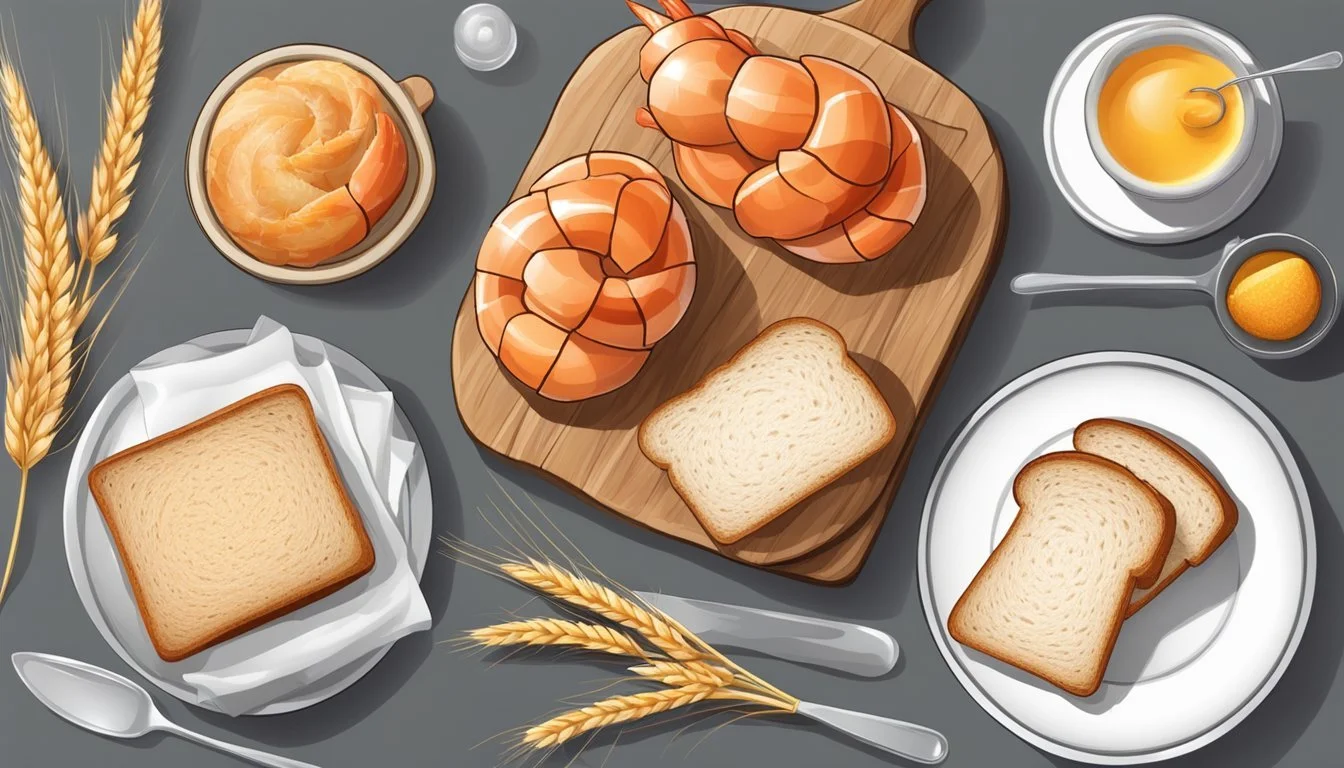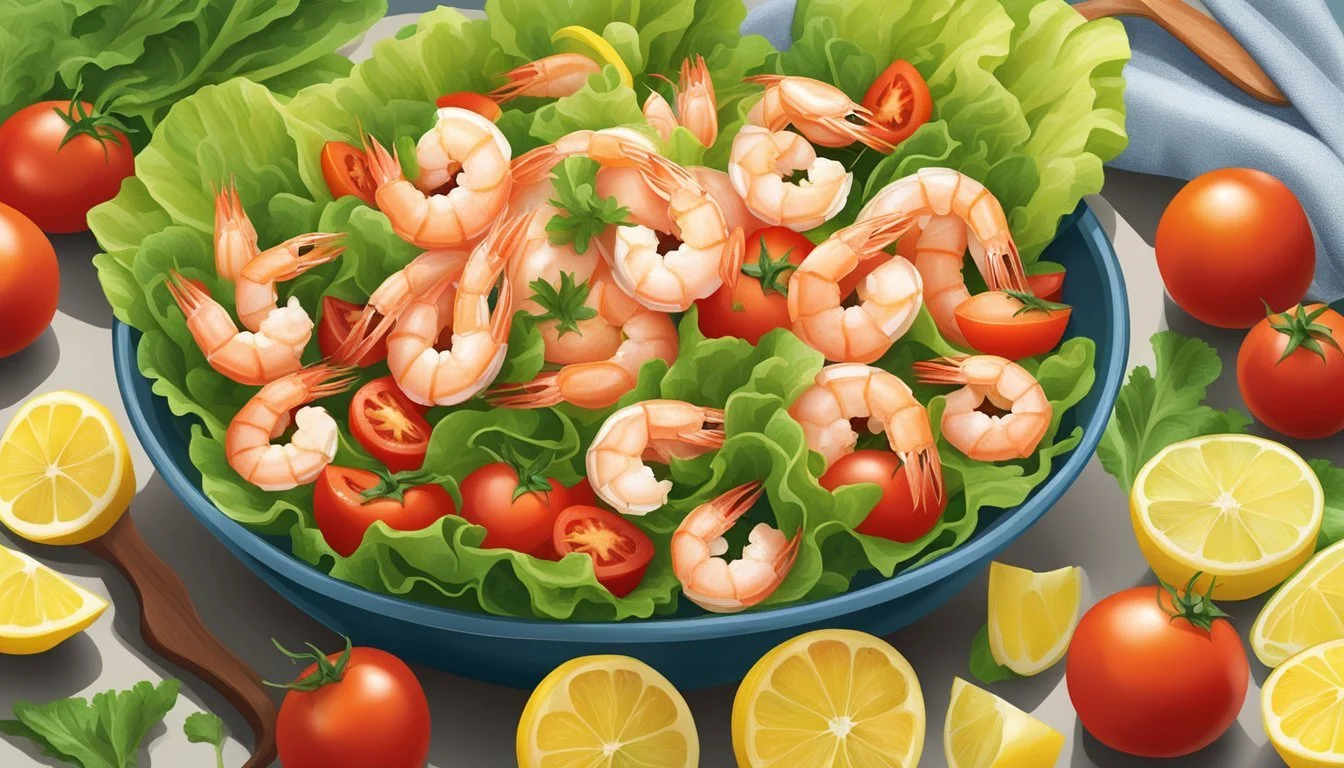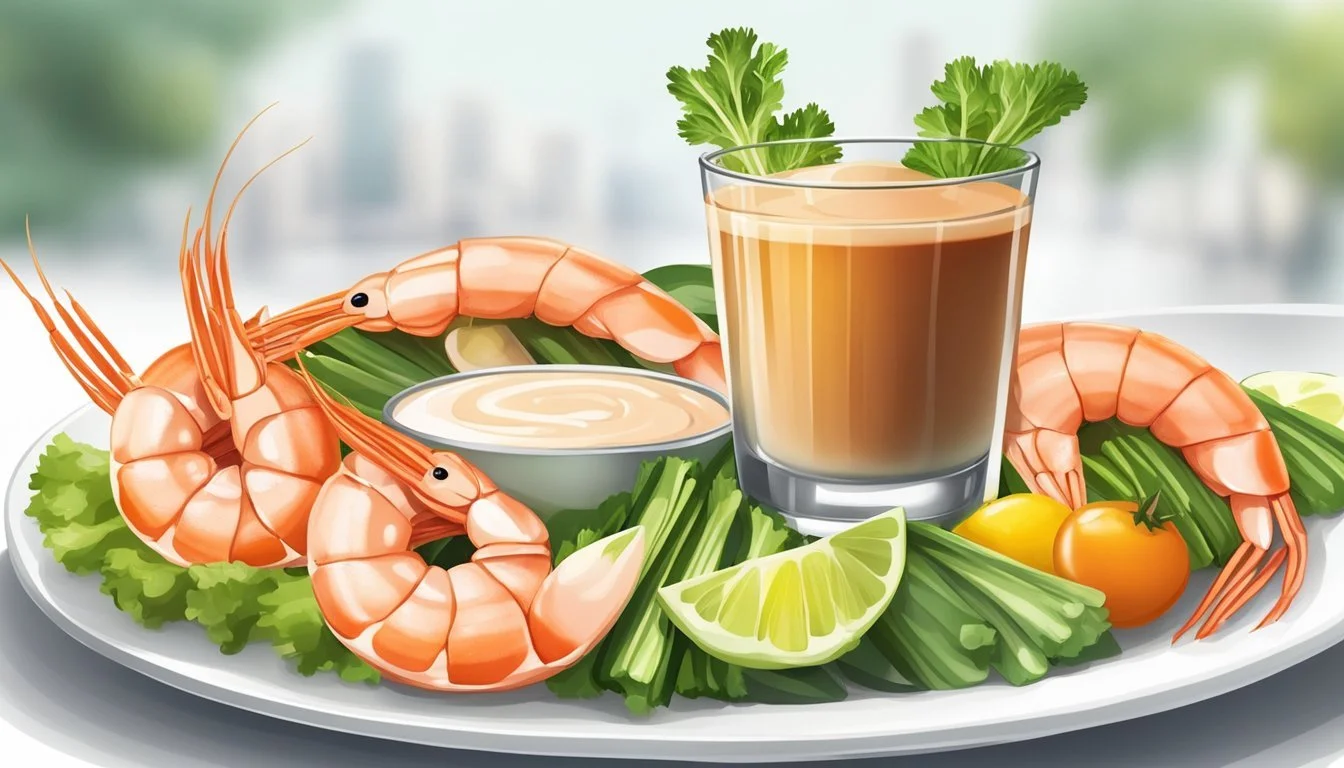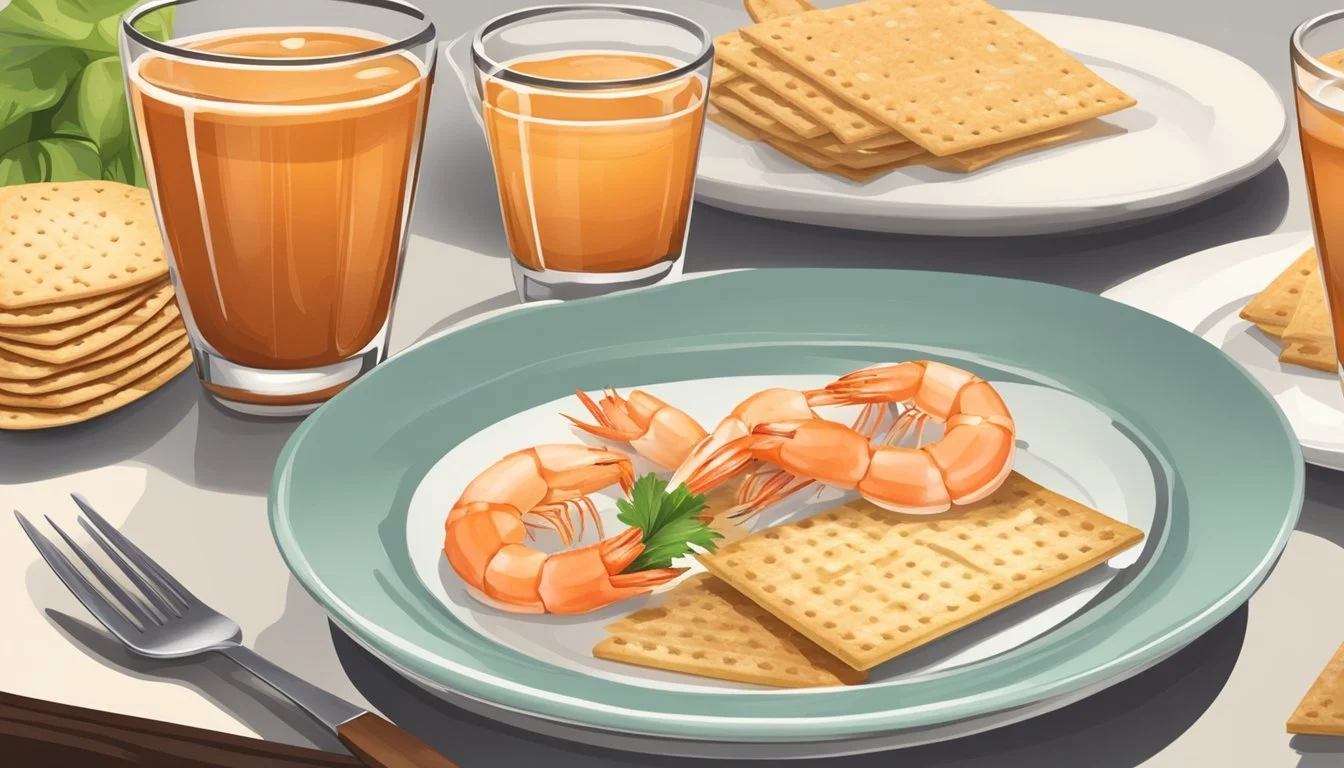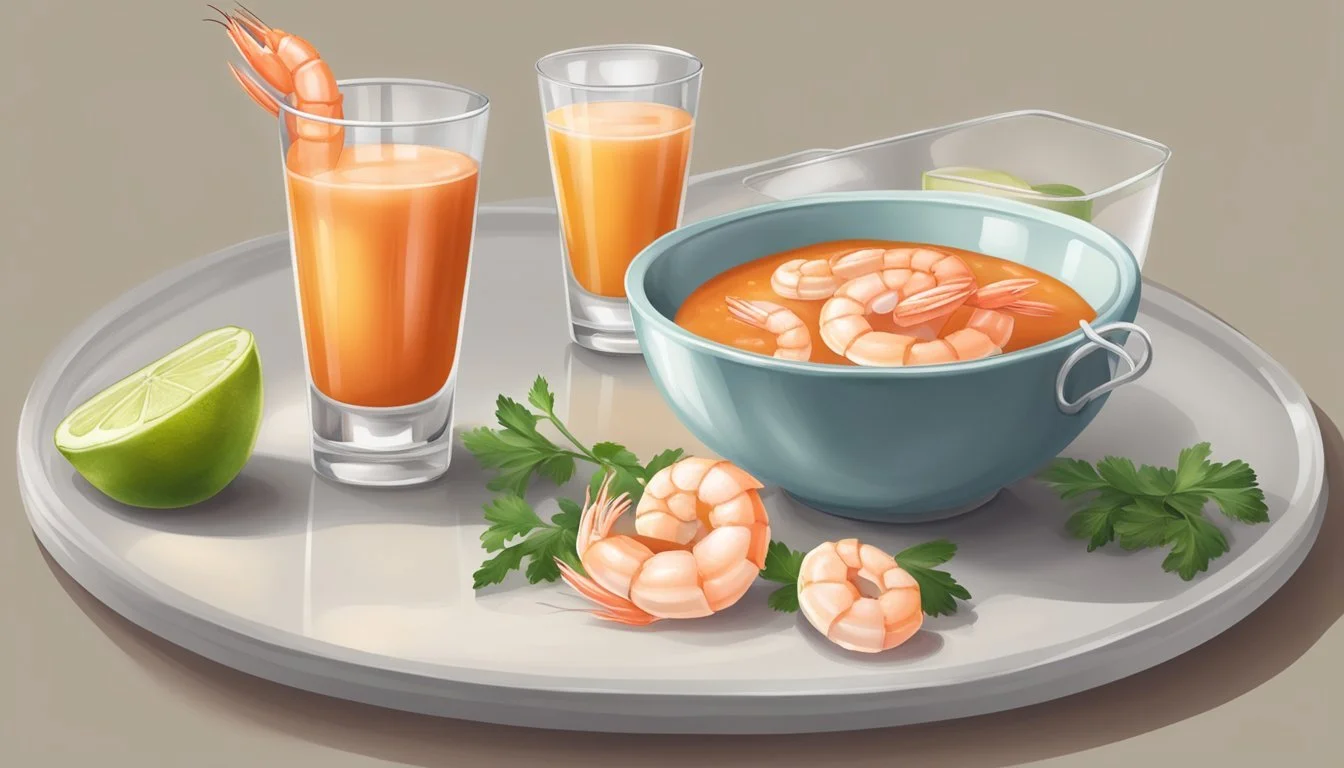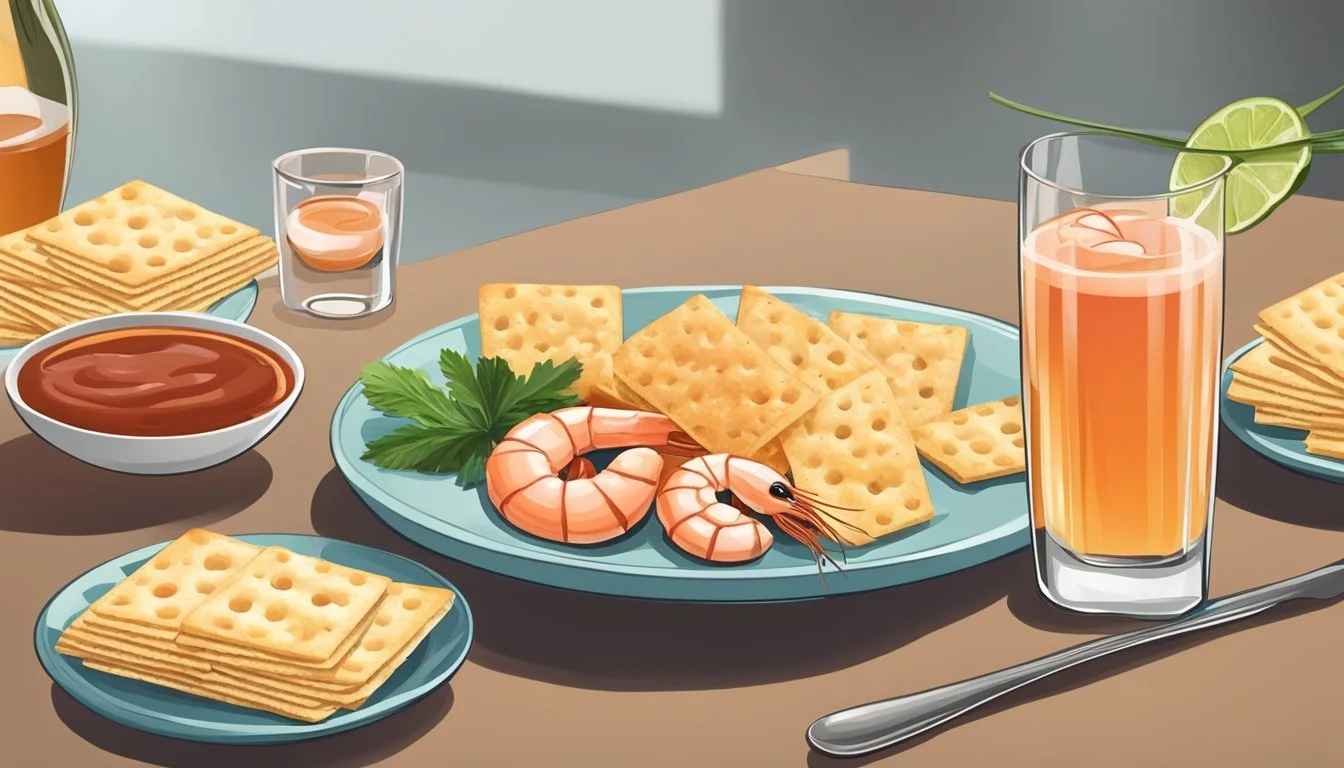Is Shrimp Cocktail Gluten-Free?
Understanding Your Dietary Options
Shrimp cocktail (What wine goes well with shrimp?) is a popular seafood dish that traditionally consists of shelled, cooked, and chilled shrimp served with a tangy cocktail sauce. It is often considered a classic appetizer and is a staple at many social gatherings. One question that arises with the growing awareness of food sensitivities is whether shrimp cocktail is gluten-free.
The shrimp itself is naturally gluten-free, as it is a type of seafood that does not contain gluten. Gluten, a protein found in wheat, barley, and rye, is a concern for individuals with celiac disease or gluten sensitivity. When it comes to the cocktail sauce that accompanies the shrimp, its gluten-free status can vary. Most cocktail sauces are made with a base of ketchup, horseradish, hot sauce, Worcestershire sauce, and lemon juice, ingredients that typically do not contain gluten.
However, it's important for consumers to be vigilant as some cocktail sauces may include ingredients like malt vinegar or modified food starches derived from sources that contain gluten. Therefore, individuals who are gluten-intolerant should either prepare homemade cocktail sauce using confirmed gluten-free ingredients or carefully scrutinize labels of store-bought sauces to ensure they are certified gluten-free, thus avoiding any gluten-containing additives.
What Is Shrimp Cocktail?
Shrimp cocktail is a classic seafood dish that showcases cooked shrimp accompanied by a tangy cocktail sauce for dipping. It is recognized for its simple, yet delightful pairing and often serves as an appetizer at gatherings and fine dining settings.
History and Popularity
Shrimp cocktail first gained popularity in the United States during the early 20th century. It became a symbol of sophistication at cocktail parties and upscale restaurants. The dish's prestige is understood through its prominence on menus across the country and its continued presence at festive occasions, reflecting an esteemed culinary tradition.
Basic Ingredients
Shrimp cocktail consists primarily of two elements: shrimp and cocktail sauce. The shrimp used are typically poached in water with a splash of fresh lemon juice, which imparts a bright, clean taste and then chilled. Cocktail sauce, the second critical component, is typically a blend of ketchup and horseradish, creating a balance of sweetness and heat, often enhanced with a dash of lemon juice for acidity. This sauce is not only a customary accompaniment for shrimp but also a staple for other seafood dishes, (What wine goes well with seafood dishes?) valued for its healthy qualities and bold flavor.
Understanding Gluten
Gluten refers to a group of proteins found in certain grains that provide elasticity to dough and contribute to the chewiness of baked products.
What Does Gluten-Free Mean?
Gluten-free implies that a product does not contain gluten, a protein found in wheat, barley, and rye. It's essential for individuals with celiac disease or gluten sensitivity to consume gluten-free products to prevent adverse health effects. Labels play a critical role; a product labeled gluten-free must meet regulatory standards that limit the presence of gluten to less than 20 parts per million.
Gluten-Free Labeling Requirements:
Must contain less than 20 ppm of gluten.
Cannot contain any type of wheat, rye, barley, or crossbreeds of these grains.
Cannot be derived from these grains that have not been processed to remove gluten.
Sources of Gluten
The primary sources of gluten are grains such as wheat, barley, and rye. Common foods containing these grains include bread, pasta, cereals, and beer. However, gluten can also be found in less obvious products like sauces, dressings, and some condiments due to cross-contamination or as a thickening agent.
Common Gluten-Containing Grains:
Wheat
Barley
Rye
Potential Hidden Sources of Gluten:
Soups and sauces
Processed meats
Salad dressings
Food additives, such as malt flavoring
When considering gluten in shrimp cocktail, one must examine both the shrimp and the cocktail sauce components for the presence of gluten or cross-contamination risks.
Preparing Gluten-Free Shrimp Cocktail
When crafting a gluten-free shrimp cocktail, one must select appropriate shrimp, use gluten-free cocktail sauce, and follow proper preparation techniques to ensure a safe and delicious appetizer.
Selecting the Right Shrimp
For a succulent shrimp cocktail, one should choose high-quality, deveined, and peeled shrimp. Fresh shrimp is ideal, but frozen can be used if allowed to thaw safely in the refrigerator. The size of the shrimp often impacts presentation and taste; large or jumbo shrimp are traditionally preferred for this appetizer.
Gluten-Free Cocktail Sauce Options
Gluten-free cocktail sauce is integral to the dish. Start with a base of gluten-free ketchup, ensuring the brand selected does not contain gluten or gluten byproducts. Add horseradish, hot sauce, and gluten-free Worcestershire sauce to taste. For a fresh zing, a squeeze of lemon juice can elevate the flavor. Homemade sauce prevents cross-contamination and allows for ingredient control.
Preparation Tips
Begin by preparing an ice bath to stop the cooking process quickly and ensure shrimp retain a firm texture. Shrimp should be cooked using a preferred method, commonly poaching, which involves cooking the shrimp in gently simmering water until they are opaque. Prep time generally takes a few minutes, while total time including chilling may range from 30 minutes to an hour, depending on the recipe. Once cooked, plunge the shrimp into the ice bath; after cooling, they can be served on a bed of lettuce with the gluten-free cocktail sauce. For an elegant presentation, distribute evenly across servings typically structured for individual enjoyment.
Cooking Techniques and Tips
In creating gluten-free shrimp cocktail dishes, one should focus on the cooking methods for shrimp, ingredients for a homemade cocktail sauce, and effective presentation suggestions to ensure a delicious and visually appealing appetizer.
Best Practices for Cooking Shrimp
To achieve perfectly cooked shrimp that are tender and flavorful, it is important to monitor the heat closely. They should be cooked quickly, typically over medium heat, to avoid a rubbery texture. Starting with cold, peeled, and deveined shrimp, cook them until they are pink and opaque. The cook time is usually around 2-3 minutes per side.
Making Homemade Cocktail Sauce
Making your own sauce guarantees a gluten-free and tasty alternative to store-bought varieties, often laden with additives. A homemade cocktail sauce can be made with just 5 ingredients: tomato paste for richness, prepared horseradish for zest, lemon juice for tang, a dash of gluten-free hot sauce for spice, and gluten-free Worcestershire sauce to bring depth. Simply whisk these together until well combined.
Presentation Suggestions
For a visually appealing appetizer, consider serving the shrimp over a bed of lettuce in individual glasses or small bowls. Sprinkle with a garnish like chopped cilantro or a lemon wedge to add a fresh look. Providing additional flavor can be done by serving the shrimp with a dipping sauce made by combining honey and gluten-free Tamari sauce, heightened with a touch of spicy chili garlic sauce and ginger, boiled until thickened.
By following these specific techniques and tips, one can easily prepare a homemade, gluten-free shrimp cocktail that is as healthy as it is delicious.
Nutritional Insights
In exploring the nutritional aspects of shrimp cocktail, it is important to consider both its caloric content and the presence of sodium. As a seafood option, shrimp cocktail can offer a healthy, gluten-free choice with a careful examination of its preparation.
Caloric and Sodium Content
Shrimp cocktail is recognized for its low-calorie profile, which makes it an appealing appetizer for those monitoring their caloric intake. On average, a standard serving of shrimp cocktail contains approximately 100 to 150 calories. However, the sodium level can vary significantly depending on the preparation method. A typical serving might contain between 400 to 600 mg of sodium, mainly from the cocktail sauce. It's important for individuals watching their sodium intake to be mindful of this detail.
Healthier Alternatives
For those seeking healthier alternatives, constructing a shrimp cocktail with modifications can be beneficial. Here are some suggestions:
Opt for homemade cocktail sauce: Making your own cocktail sauce can greatly reduce the sodium content. Use fresh ingredients and adjust to taste.
Select low-sodium shrimp: Choose fresh or frozen shrimp that has not been treated with sodium-rich preservatives.
Incorporate fresh herbs and spices: Boost flavor without adding sodium by utilizing herbs such as cilantro, dill, or parsley, and spices like cayenne or paprika.
By adapting the traditional shrimp cocktail recipe to include these healthier alternatives, one can enjoy a gluten-free and nutritious appetizer that aligns with dietary preferences and restrictions.
Buying Guide for Ingredients
When selecting ingredients for a gluten-free shrimp cocktail, one must focus on the quality of shrimp and the gluten content in cocktail sauce. It's crucial to read labels carefully and choose products that are clearly labeled as gluten-free.
Shopping for Gluten-Free Products
When buying cocktail sauce and other accompaniments, consumers should look for labels that declare the product is gluten-free. This ensures that the item has met strict standards for gluten content. Key ingredients such as ketchup, horseradish, lemon juice, and hot sauce typically do not contain gluten, but variations like malt vinegar do and should be avoided. Here's a quick checklist for shopping:
Cocktail Sauce: Look for brands that label their sauce as gluten-free.
Ketchup: Most major brands are gluten-free, but always confirm by checking the label.
Horseradish: Pure horseradish is typically safe, but watch for additives in prepared versions.
Worcestershire Sauce: Some brands may contain gluten, so opt for those that specify gluten-free.
Fresh versus Frozen Shrimp
Choosing between fresh and frozen shrimp is a matter of preference and availability. For fresh shrimp, it's important to buy from reputable sources to ensure the quality and freshness. Whether one opts for large or jumbo sizes, the shrimp should smell fresh, not fishy. Fresh shrimp often comes uncooked and will need to be deveined and cooked before use.
Frozen shrimp can be just as good as fresh if they are processed and frozen quickly after being caught. They offer the convenience of being deveined and sometimes pre-cooked. One should make sure to thaw frozen shrimp properly by placing them in the refrigerator overnight or under cold running water to maintain texture and flavor. Here's what to remember:
Fresh Shrimp: Should smell neutral and come from a trusted source.
Frozen Shrimp: Look for packages that have clear labeling of size (large, jumbo) and whether they are cooked or uncooked. Ensure there's no evidence of ice crystals or freezer burn.
Serving Recommendations
When preparing shrimp cocktail as a gluten-free appetizer, one should consider the accompaniments and the appropriate portion sizes for the servings. This section provides specific examples and techniques to enhance the dish while maintaining its gluten-free integrity.
Accompaniments and Garnishes
Cucumbers: Diced for a refreshing crunch.
Celery: Chopped for added texture and flavor.
Onions: Finely sliced red onions provide a sharp contrast.
Cilantro: Freshly chopped for an herby zest.
Tomatoes: Seeded and diced, they offer a juicy component.
Lemon Juice: A squeeze adds essential brightness.
Cayenne: A small pinch can introduce a spicy kick.
Serrano Pepper: Finely chopped for those who prefer extra heat.
Gluten-Free Sauce: Ensure the cocktail sauce is gluten-free, or prepare your own.
Shredded Lettuce: A bed of lettuce makes a flavorful and crunchy base.
The choice of accompaniments can greatly influence the final presentation and taste of the shrimp cocktail, allowing it to be customized to different palates.
Portion Sizes and Servings
An appetizer should tantalize the taste buds without overwhelming them. For a shrimp cocktail, consider the following guidelines:
Individual Servings: Typically, 4-6 shrimp per person is ample.
Family Style: A platter can be arranged with shrimp around the rim and sauce in the center.
Course Consideration: If serving as a main course, increase the portion to 8-12 shrimp per person.
The portion size will vary depending on whether the shrimp cocktail is the primary dish or a precursor to a larger meal. Balancing portion sizes ensures guests enjoy the appetizer while still looking forward to the main course.
FAQs and Troubleshooting
In addressing the nuances of preparing and storing a gluten-free shrimp cocktail, the following subsections highlight pertinent concerns along with practical guidance tailored for those with gluten sensitivities.
Common Gluten Concerns in Shrimp Cocktail
While shrimp itself is naturally gluten-free, the gluten content in shrimp cocktail largely depends on the cocktail sauce used. Many commercial sauces can contain gluten through additives like stabilizers or as a result of cross-contamination during production. Reading labels is essential; one should look for gluten-free certifications or ingredient lists that explicitly exclude wheat, barley, rye, and derivatives. For a safe bet, one can use a gluten-free recipe to create a homemade cocktail sauce.
Storage and Leftovers
Shrimp cocktail should be stored properly to maintain its freshness and to prevent any potential gluten cross-contamination. Leftover shrimp cocktail can be refrigerated for up to two days; it should be covered in an airtight container to avoid absorbing any gluten-containing odors or flavors from other items in the fridge. If one has used homemade gluten-free cocktail sauce, they should ensure it's stored separately in a clearly labeled container to avoid mixing it with non-gluten-free items.
Conclusion
Shrimp cocktail, primarily composed of shrimp and cocktail sauce, typically aligns with a gluten-free diet. Shrimp, inherently gluten-free, can be safely consumed by those with gluten sensitivity or celiac disease. However, caution is advised regarding the cocktail sauce, as it may contain gluten depending on the brand or recipe used.
When preparing shrimp cocktail at home, individuals have the option to create their own gluten-free cocktail sauce using ingredients such as ketchup, horseradish, Worcestershire sauce (ensuring it's a gluten-free variant), lemon juice, and hot sauce. Store-bought cocktail sauces should be diligently checked for a gluten-free label or certification to avoid accidental ingestion of gluten.
Cross-contamination is a potential risk factor, especially in restaurants or when sharing kitchen spaces. It is imperative to ensure that all preparation and cooking utensils have not been in contact with gluten-containing foods to maintain the gluten-free integrity of the shrimp cocktail.
In restaurants, diners should communicate with staff to confirm the gluten-free status of the shrimp cocktail. They should verify that the establishment is aware of how to handle gluten-free orders to mitigate the risk of cross-contamination.
Unbreaded shrimp is a safe choice for gluten-free diets, while breaded shrimp should be avoided unless specifically labeled as gluten-free. If dining out, opt for clarity by choosing establishments with clear gluten-free menu options or staff who are knowledgeable about gluten-free accommodations.


